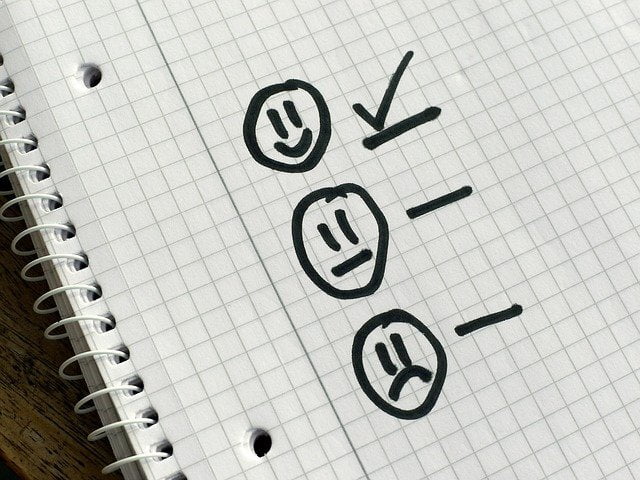
Imagine someone giving you a hard time about something you did, or cutting you off in traffic, or criticizing your views on social media. What would you do? Will you react emotionally, with a knee-jerk impulse? Or will you take a step back from the emotions and respond from a place of calm and clarity? Will the results of your actions be positive, or negative?
Reactions and responses may look alike. However, they feel different, and can have very different results. The difference between the two lies in a deep breath, a pause, or a brief moment of mindful presence before taking action. Whether or not you pause between the trigger and the action can mean the difference between a pleasant outcome that strengthens the situation, or a messier situation that leaves everyone feeling hurt and upset.
Reactions
Reactions are instinctual and stem from the subconscious mind. There’s no filtering process when you react in a situation, you are on auto-pilot. When you react, you do and say things without thinking first or considering the implications of what you do or say in the moment. You just act. Reactions are instant. They are often survival-oriented and can serve as a defense mechanism and they are driven by the beliefs, biases, and prejudices that we hold subconsciously.
Reactions just happen, without much conscious participation, and the effects can often be negative. The more reacting we do, the less in control we are.
Responses
Responses are more thoughtful. When you respond, you first create some space between yourself and the emotions that the situation created. Pausing for a moment moves you out of a defensive, survival type reaction and allows you to see a situation more clearly. Because of this, responses allow you to weigh the possible outcomes of your reply and to take into consideration the pros and cons of your next actions.
Being mindfully present or pausing when responding means you can notice when something triggers your emotions, and you can remain in control of your actions. You are able to distance yourself from the experience and choose how to proceed, rather than reacting impulsively.
Responding Works
When something happens that upsets us, the initial impulse is typically emotional. Once you notice that emotion, pause. We don’t have to act immediately just because we have an internal reaction. We can pause, not take any action, and breathe. We can watch this urge to act irrationally arise, then let it go away. Sometimes that takes a few seconds, other times it means we should remove ourselves politely from the situation and let ourselves cool down before we respond.
Pause.
Notice the reaction fade.
Then consider what the most intelligent, compassionate response might be. What can we do that will help our relationship, teach, build a better team or partnership, make the situation better, or calm everyone down, including ourselves?
P.A.C.E.
Creating a short pause before responding to the trigger can help you disconnect from those automatic reactions and change the course of the situation completely. The acronym P.A.C.E. is something I have used myself, and now teach my clients so they are able to respond to stressful situations rather than react to them.
P: Pause
As soon as you recognize your emotions begin to rise, take a deep breath. For example, let’s say you get cut off on the highway. Before you spin into the typical road rage and get bent out of shape, as soon as you notice your energy shift, take a deep breath. Push your stomach out and inhale deeply. Hold it for just a moment, then exhale slowly. Keep deep breathing until your mind begins to clear.
A: Ask Yourself
What are you feeling? Is it frustration, insecurity, or something else? What actually triggered you? Was it the event itself, or could it have been related to a previous judgment you had or something that happened in the past? Often our emotional responses are tied to something below the surface of the actual event.
C: Consider the Situation
Take a step back and consider what matters most to you in this situation. What is your goal or ideal outcome? With the new understandings you are creating, you can now decide how you can respond in a productive way that will move you closer to your desired outcome.
If the reason for your heightened emotional state has nothing to do with the actual trigger, then the solution isn’t likely to be found by responding to it directly. This is a good indicator that you have some limiting beliefs or negative experiences that you may choose to work on.
E: Empower Yourself
Empower yourself to move closer towards your values and goals. Give yourself permission to respond from a place of calm. Notice how pausing impacts your body and your nervous system. Notice how responding versus reacting impacts your relationships and how you feel about yourself!
You can start living a life that is more responsive and less reactive simply by paying attention and noticing when what you do or say feels off-center. Pause whenever you feel yourself about to react. Take a deep breath, step back, and give yourself the opportunity to respond.∎
Free “Guide to Abdominal Breathing for Anxiety and Stress Relief”
https://zfrmz.com/KuWL6RM1fRmcpiQlasJi
Free Hypnosis Program- “15 Minute De-Stress” custom audio hypnosis program:
https://zfrmz.com/AHwC5ECIYDLXnfj3NU4G
Karen Gray is a Certified Hypnotist, Registered Nurse, and Director of Green Mountain Hypnosis. For more information on how you can use hypnosis to change your life, schedule your free Strategy Call at https://karengray3.zohobookings.com/#/customer/3976471000000026006